
Welcome to nashvillesnakes.com! I am David, a snake enthusiast living in Nashville, TN. Many people don't know that Nashville is in fact full of snakes! You just need to know where to find them - they can often be shy and elusive. Some Tennessee snake species are more common outside of the city limits, in different parts of Davidson County TN, but many types of snakes are indeed common in the more urban parts of Nashville. This guide is meant to help educate you about the beautiful snakes of Nashville, and to help you identify the most common snakes of Nashville, as well as the venomous snakes of Nashville that you should learn to recognize and avoid. If you want more detail, click here for my complete list of ALL snake species in Nashville. Remember the following:
- Most snakes of Nashville are harmless and don't want to encounter you
- Venomous snakes exist but are uncommon in Nashville, Tennessee
- Snakes eat rats and mice and are a valuable part of the Tennessee ecosystem
- Never kill a snake - if you leave a snake alone, it will leave you alone.
Common Snake Species in Nashville
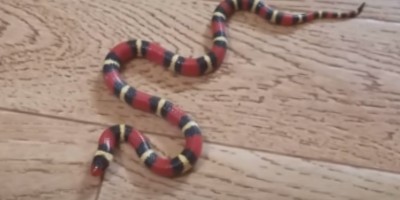 Scarlet snake (Cemophora coccinea):
The scarlet snake is slender and can range from small to medium size. These snakes have red and pointed heads. They also have smooth scales, with a color pattern that makes them stand out. This color pattern consists of wide red bands rimmed with black, with a cream or yellow color in between the spaces of the pattern, throughout the whole length of their body. In older snakes, there might be small dark spots on the light parts of their bodies. Their bellies could be white or cream, and the males have longer tails. They have a length of 14-20 inches.
They occur statewide, except the northwestern section of Tennessee, the western highland rim, and upper east Tennessee. Scarlet snakes are found in pine or hardwood forests, having sandy or loamy soils that they can burrow through with ease. They can also be found in litters of leaves, trash, logs, and under rocks.
Scarlet snakes feed on eggs of other reptiles, especially that of lizards and snakes. They feed on mice, snakes, and lizards too.
Scarlet snake (Cemophora coccinea):
The scarlet snake is slender and can range from small to medium size. These snakes have red and pointed heads. They also have smooth scales, with a color pattern that makes them stand out. This color pattern consists of wide red bands rimmed with black, with a cream or yellow color in between the spaces of the pattern, throughout the whole length of their body. In older snakes, there might be small dark spots on the light parts of their bodies. Their bellies could be white or cream, and the males have longer tails. They have a length of 14-20 inches.
They occur statewide, except the northwestern section of Tennessee, the western highland rim, and upper east Tennessee. Scarlet snakes are found in pine or hardwood forests, having sandy or loamy soils that they can burrow through with ease. They can also be found in litters of leaves, trash, logs, and under rocks.
Scarlet snakes feed on eggs of other reptiles, especially that of lizards and snakes. They feed on mice, snakes, and lizards too.
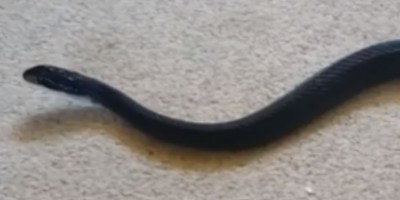 North American racer (Coluber constrictor):
Two subspecies of the North American racer are known in Tennessee – the northern black racer (Coluber constrictor) and the southern black racer (Coluber priapus).
Both subspecies have the same physical description and can only be differentiated anatomically. They are large and slender (the males are larger than the females), with a very dark black shade and smooth, shiny scales. They have white colorations on their throat and chin. They have a dark grey or dark blue colored stomach. The young ones have lighter colors with dark grey or brown or reddish-brown patterns on their back. The length of the snake is 36-60 inches.
The North American racer can be found in the eastern half of Tennessee, while the South American racer can be found in Tennessee's western half. North American racers are found in various habitats, especially open areas, like open fields, pastures, and forest edges.
North American racers feed on frogs, birds, bird eggs, insects, other snakes, and small rodents.
North American racer (Coluber constrictor):
Two subspecies of the North American racer are known in Tennessee – the northern black racer (Coluber constrictor) and the southern black racer (Coluber priapus).
Both subspecies have the same physical description and can only be differentiated anatomically. They are large and slender (the males are larger than the females), with a very dark black shade and smooth, shiny scales. They have white colorations on their throat and chin. They have a dark grey or dark blue colored stomach. The young ones have lighter colors with dark grey or brown or reddish-brown patterns on their back. The length of the snake is 36-60 inches.
The North American racer can be found in the eastern half of Tennessee, while the South American racer can be found in Tennessee's western half. North American racers are found in various habitats, especially open areas, like open fields, pastures, and forest edges.
North American racers feed on frogs, birds, bird eggs, insects, other snakes, and small rodents.
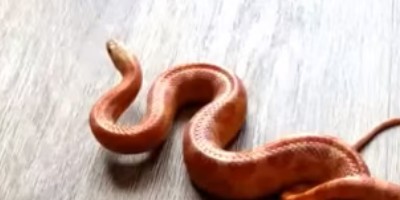 Red corn snake (Pantherophis guttatus):
Text about snake 3. Text about snake 3. Text about snake 3. Text about snake 3. Text about snake 3. Text about snake 3. Text about snake 3.
Text about snake 3. Text about snake 3. Text about snake 3. Text about snake 3. Text about snake 3. Text about snake 3. Text about snake 3.
Text about snake 3. Text about snake 3. Text about snake 3. Text about snake 3. Text about snake 3. Text about snake 3. Text about snake 3.
Red corn snake (Pantherophis guttatus):
Text about snake 3. Text about snake 3. Text about snake 3. Text about snake 3. Text about snake 3. Text about snake 3. Text about snake 3.
Text about snake 3. Text about snake 3. Text about snake 3. Text about snake 3. Text about snake 3. Text about snake 3. Text about snake 3.
Text about snake 3. Text about snake 3. Text about snake 3. Text about snake 3. Text about snake 3. Text about snake 3. Text about snake 3.
Venomous Snake Species in Nashville
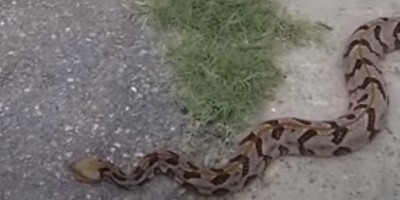 Timber rattlesnake (Crotalus horiddus):
The timber rattlesnake is the largest and the deadliest among the four venomous snakes of Tennessee. The timber rattlesnake is large (with the males being larger than the females) and heavy. The head is large and triangular, and it possesses vertical pupils. The top of the snake's head is tan, grey, or yellow with dark brown lines running down each eye to the jaw. A large sensory pit is found on each side of the head, between the nostril and eye. The color of the body usually varies between yellow, black, tan, dark brown, and pink. Black V-shaped cross bands align the body's length, and a rusty colored stripe appears down the snake's back. Also, the scales of the snake are keeled. The snake has a light grey, or tan belly, with brown spots unevenly spread on it. Young timber rattlesnakes are lighter in color than the adults. It has a length of 36-60 inches, and like any other rattlesnake, there's a rattle at the end of the tail.
The timber rattlesnake occurs statewide. The habitat of the snake includes woody forests with rocky bluffs, south-facing hills, cane thickets, swamps, mountains, and rural habitats. They sunbathe on rocks and fallen trees or wood logs.
Timber rattlesnakes feed on small rodents like squirrels, rats, mice, and chipmunks. They also feed on small birds, small mammals, and lizards.
Timber rattlesnake (Crotalus horiddus):
The timber rattlesnake is the largest and the deadliest among the four venomous snakes of Tennessee. The timber rattlesnake is large (with the males being larger than the females) and heavy. The head is large and triangular, and it possesses vertical pupils. The top of the snake's head is tan, grey, or yellow with dark brown lines running down each eye to the jaw. A large sensory pit is found on each side of the head, between the nostril and eye. The color of the body usually varies between yellow, black, tan, dark brown, and pink. Black V-shaped cross bands align the body's length, and a rusty colored stripe appears down the snake's back. Also, the scales of the snake are keeled. The snake has a light grey, or tan belly, with brown spots unevenly spread on it. Young timber rattlesnakes are lighter in color than the adults. It has a length of 36-60 inches, and like any other rattlesnake, there's a rattle at the end of the tail.
The timber rattlesnake occurs statewide. The habitat of the snake includes woody forests with rocky bluffs, south-facing hills, cane thickets, swamps, mountains, and rural habitats. They sunbathe on rocks and fallen trees or wood logs.
Timber rattlesnakes feed on small rodents like squirrels, rats, mice, and chipmunks. They also feed on small birds, small mammals, and lizards.
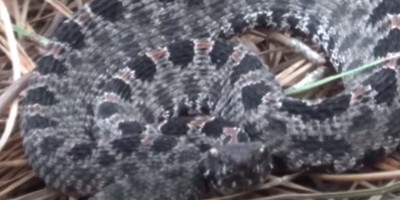 Pygmy rattlesnake (Sistrurus milarius):
This poisonous snake is the smallest of all the venomous snakes in Tennessee, with a length of 15-20 inches. The head has wide black stripes that run down the length of the vertical eyes to the corner of the mouth, and the head also has nine large plates. The snake is colorful, being grey or tan, with an orange-brown mid-dorsal stripe. Bar shaped dark marks can be found down the length of the back and one or two rows of dark spots down the side of the body. The skin of the snake is keeled. The underside of the snake is a pale cream color, spotted with dark bars. Young ones have tails with yellow stripes.
One of the pygmy rattlesnake subspecies, the western pygmy rattlesnake, is found along the western highland rim from Steward Country to the south border. They are usually found near areas close to water bodies. Other habitats are wetlands, floodplains, moist fields, glades, rocky uplands, and pine woods.
Pygmy rattlesnakes have a diet that consists of lizards, small snakes, frogs, small rodents, and amphibians.
Pygmy rattlesnake (Sistrurus milarius):
This poisonous snake is the smallest of all the venomous snakes in Tennessee, with a length of 15-20 inches. The head has wide black stripes that run down the length of the vertical eyes to the corner of the mouth, and the head also has nine large plates. The snake is colorful, being grey or tan, with an orange-brown mid-dorsal stripe. Bar shaped dark marks can be found down the length of the back and one or two rows of dark spots down the side of the body. The skin of the snake is keeled. The underside of the snake is a pale cream color, spotted with dark bars. Young ones have tails with yellow stripes.
One of the pygmy rattlesnake subspecies, the western pygmy rattlesnake, is found along the western highland rim from Steward Country to the south border. They are usually found near areas close to water bodies. Other habitats are wetlands, floodplains, moist fields, glades, rocky uplands, and pine woods.
Pygmy rattlesnakes have a diet that consists of lizards, small snakes, frogs, small rodents, and amphibians.
If you're unsure, you can email me a photo of the snake at info@nashvillesnakes.com and I will email you back with the snake's species. If you found a snake skin, read my Found a Skin? page, and you can email me a photo of the skin, and I'll identify the snake for you. If you need professional Nashville snake removal help, click my Get Help page, or see the below website sponsor I found, who provides that service.
Remember, the term is not poisonous snakes of Nashville, it's venomous snakes of Nashville. Poison is generally something you eat, and venom is injected into you. That said, dangerous snakes are very rare in Nashville. The few venomous snakes of Davidson County are rarely seen. But they are commonly misidentified, so learn about all the snake species of Nashville in order to correctly identify them. These snakes are usually also found in the surrounding towns of Belle Meade, Forest Hills, Berry Hill, Oak Hill, Coopertown, Springfield, Franklin, Brentwood, La Vergne, Ashwood, Williamsburg, Murfreesboro, and the surrounding areas.
Read our article about:
List of Snakes that Eat Birds
nashvillesnakes.com domain and hosting costs made possible by the generous support of this sponsor:
